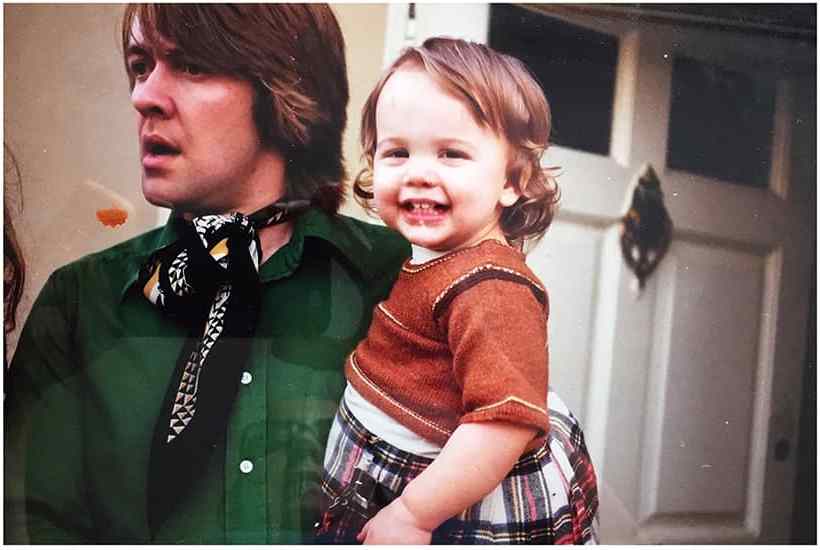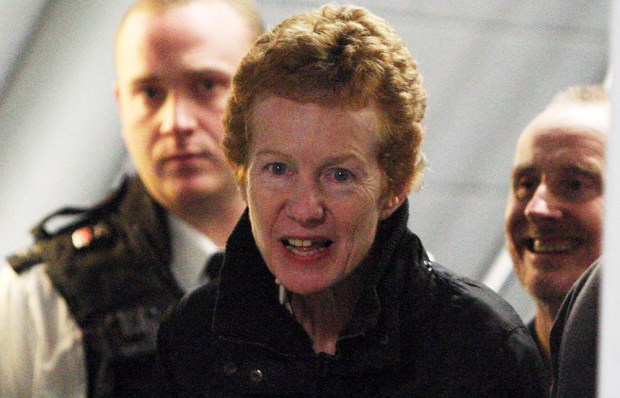Sins of My Father begins with an ending. Describing her 61-year-old parent’s final desperate flight from a life of vibrant glitter, creativity and affluence, Lily Dunn reveals the extent to which it was simultaneously riddled with devastating addiction. After alcoholism, drugs, money and sex played their destructive role, her father (who is never given a first name) died incontinent, with shoes that ‘let the rain in’, having subsisted on a diet of vodka and scones and, due to the removal of all his teeth, with a mouth that had ‘turned in on itself, a perpetual downward curve of misery’, a smile reversed.
Many years earlier the six-year-old Lily was seen to ‘forget’ her smile when the godlike paternal figure of her universe abandoned her, along with her mother, brother and the family home in London, to join his own god-figure in a commune in India. Baghwan Shree Rajneesh, an Indian mystic, promoted free love and sterilisation for both sexes, encouraging his disciples, known as sannyasins, to think that children were ‘obstructions to the personal development’ of their parents and should be given autonomy from the earliest age. Sex was the commodity that enabled Dunn’s father, ‘serial shagger’, ‘adulterer’ (from the Latin ‘to alter’), to live according to his own direction, indifferent to the casualties strewn in the wreckage of his adulterated life.
Dunn attributes her father’s dysfunction to the bullying and sexual abuse he had experienced, aged seven, at boarding school; but this is also Dunn’s own story. In a symbiotic intertwining of biography and autobiography, we see a child’s obsessive, indeed addictive, desire for loving parental attention perpetually eclipsed by a father’s self-love. As Dunn went from being ‘bold, bright and confident to mute and pale… folded into a shell’, her father returned from India an emaciated stranger, wearing a beaded necklace, with a ‘dreamy’ smile and ‘glazed’ eyes, his identity questioned by his two confused children. When he joined an ashram in Suffolk, they remained at home with their mother, visiting him only at weekends, when the feral behaviour of the other resident children made Dunn feel ‘off centre, wanting to belong’.
Considerable courage is needed to return to the stark, bright light of trauma in this shirking-nothing way; but writing of this intensity has delivered an astonishing and valuable memoir. In Dunn’s quest to disentangle a deeply dependent parental relationship and the consequences it can have, she reaches out to the law, to therapy and above all to her own literary creativity to explain and objectify her memories.
When her ever-charismatic father went on to set up his own commune and publishing company in Italy, accompanied by his new, 18-year-old wife – more of a sister to Dunn than a stepmother – she spent holidays in the heady, sexy heat, where sun-drenched olive groves, almond orchards and sleepy cats provided the landscape for underage drugs and sex. A terrifying accident on a moped goes by, devoid of adult care, and Dunn is groomed to the brink of losing her virginity, aged 13, to a creepy new member of the cult in his late thirties. Though she begs her father to save her, he encourages her to go ahead, complicit in the abuse. It is the build- up to Dunn’s own long period of dysfunction, in which drugs, drink, relationships and a marriage that falters mirror her father’s chaos.
How do we break patterns? Are we marked, Dunn asks, by the genetic ‘touch of the cheek’ of the generation that precedes us? Or do creativity and truth-telling offer a way to rupture addictive inheritance? Do you need to ‘forget’ your smile in order to be able to retrieve it? Dunn wonders whether she is still mythologising her father, caught in the ‘web of his own romance about himself’. Even as his alcoholism robs him of self-awareness and plunges him into denial, she remains powerless within the still-glowing embers of ‘protective love’.
There is a third story here: that of Dunn’s other parent. A tether to normality and constant source of love is provided by the background figure of her mother, who is blessed with the awareness of when to step in and when to hold back, patiently waiting for her daughter to ask for help. It is a portrait of unconditional motherhood – the parental influence which, together with the writing of this book, proved crucial in Dunn’s route to breaking the corrosive pattern, enabling her to embrace parenthood herself and, if not to forgive, at last to heal.
Got something to add? Join the discussion and comment below.
Get 10 issues for just $10
Subscribe to The Spectator Australia today for the next 10 magazine issues, plus full online access, for just $10.
You might disagree with half of it, but you’ll enjoy reading all of it. Try your first month for free, then just $2 a week for the remainder of your first year.














Comments
Don't miss out
Join the conversation with other Spectator Australia readers. Subscribe to leave a comment.
SUBSCRIBEAlready a subscriber? Log in